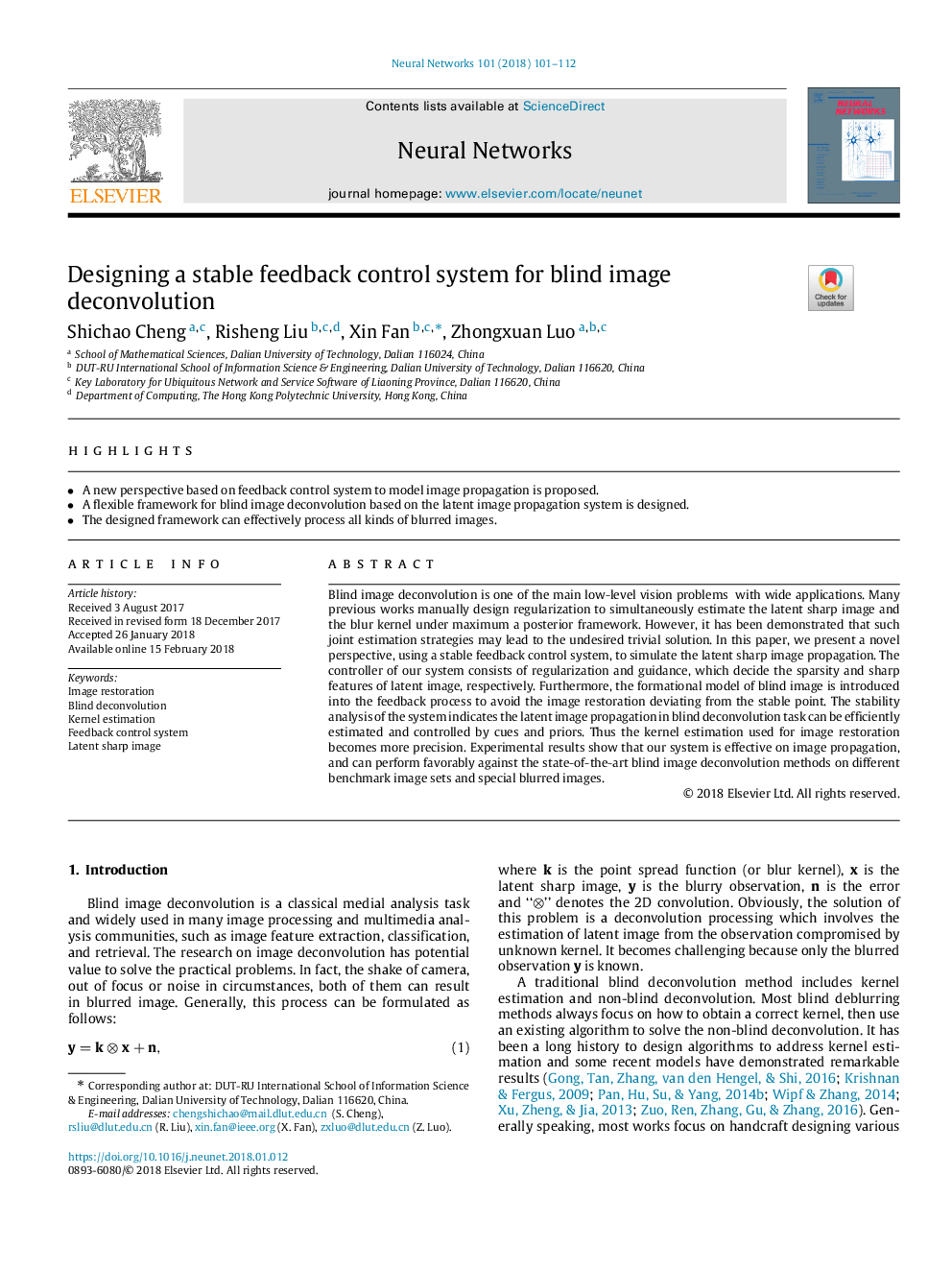| Article ID | Journal | Published Year | Pages | File Type |
|---|---|---|---|---|
| 6863020 | Neural Networks | 2018 | 12 Pages |
Abstract
Blind image deconvolution is one of the main low-level vision problems with wide applications. Many previous works manually design regularization to simultaneously estimate the latent sharp image and the blur kernel under maximum a posterior framework. However, it has been demonstrated that such joint estimation strategies may lead to the undesired trivial solution. In this paper, we present a novel perspective, using a stable feedback control system, to simulate the latent sharp image propagation. The controller of our system consists of regularization and guidance, which decide the sparsity and sharp features of latent image, respectively. Furthermore, the formational model of blind image is introduced into the feedback process to avoid the image restoration deviating from the stable point. The stability analysis of the system indicates the latent image propagation in blind deconvolution task can be efficiently estimated and controlled by cues and priors. Thus the kernel estimation used for image restoration becomes more precision. Experimental results show that our system is effective on image propagation, and can perform favorably against the state-of-the-art blind image deconvolution methods on different benchmark image sets and special blurred images.
Related Topics
Physical Sciences and Engineering
Computer Science
Artificial Intelligence
Authors
Shichao Cheng, Risheng Liu, Xin Fan, Zhongxuan Luo,
